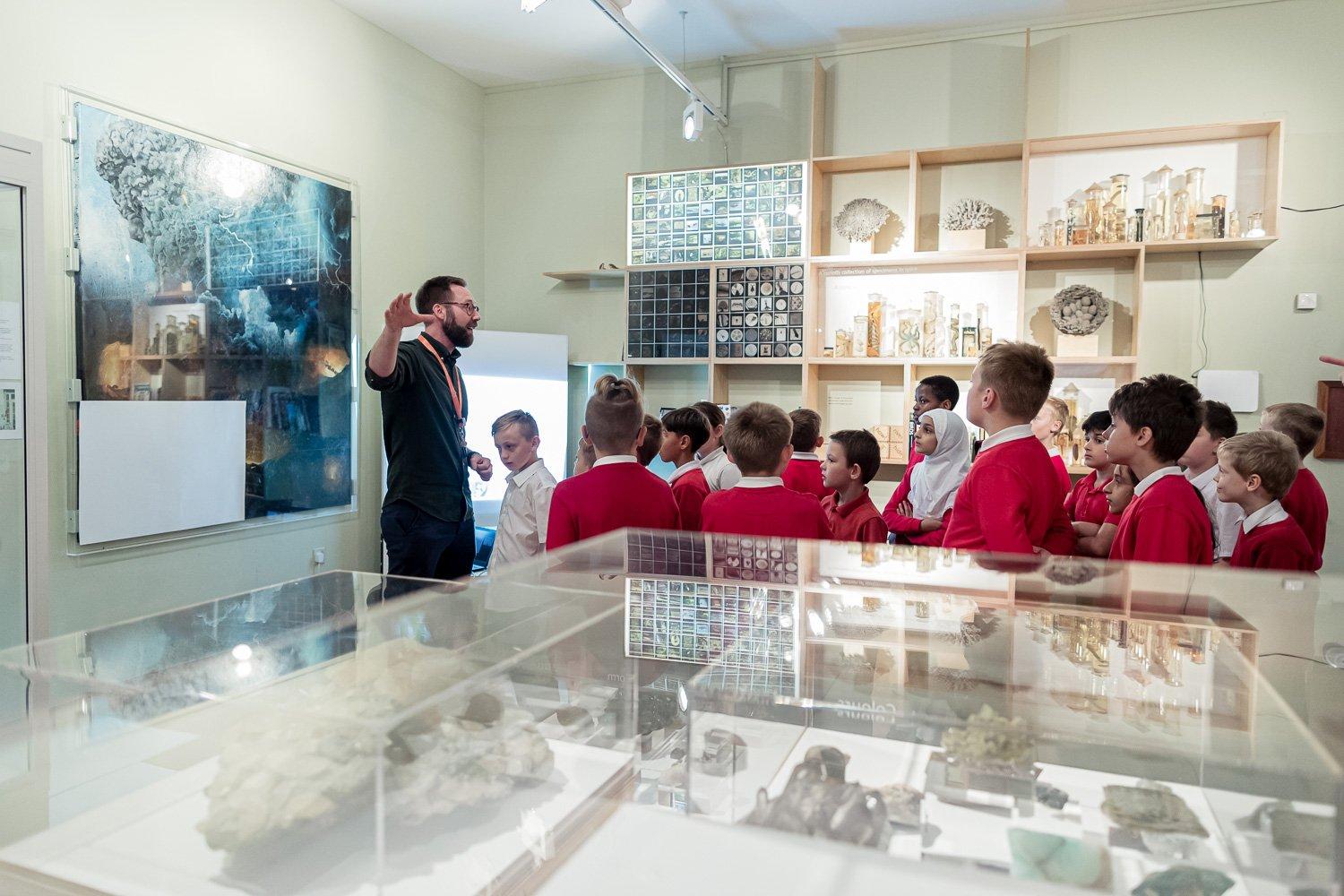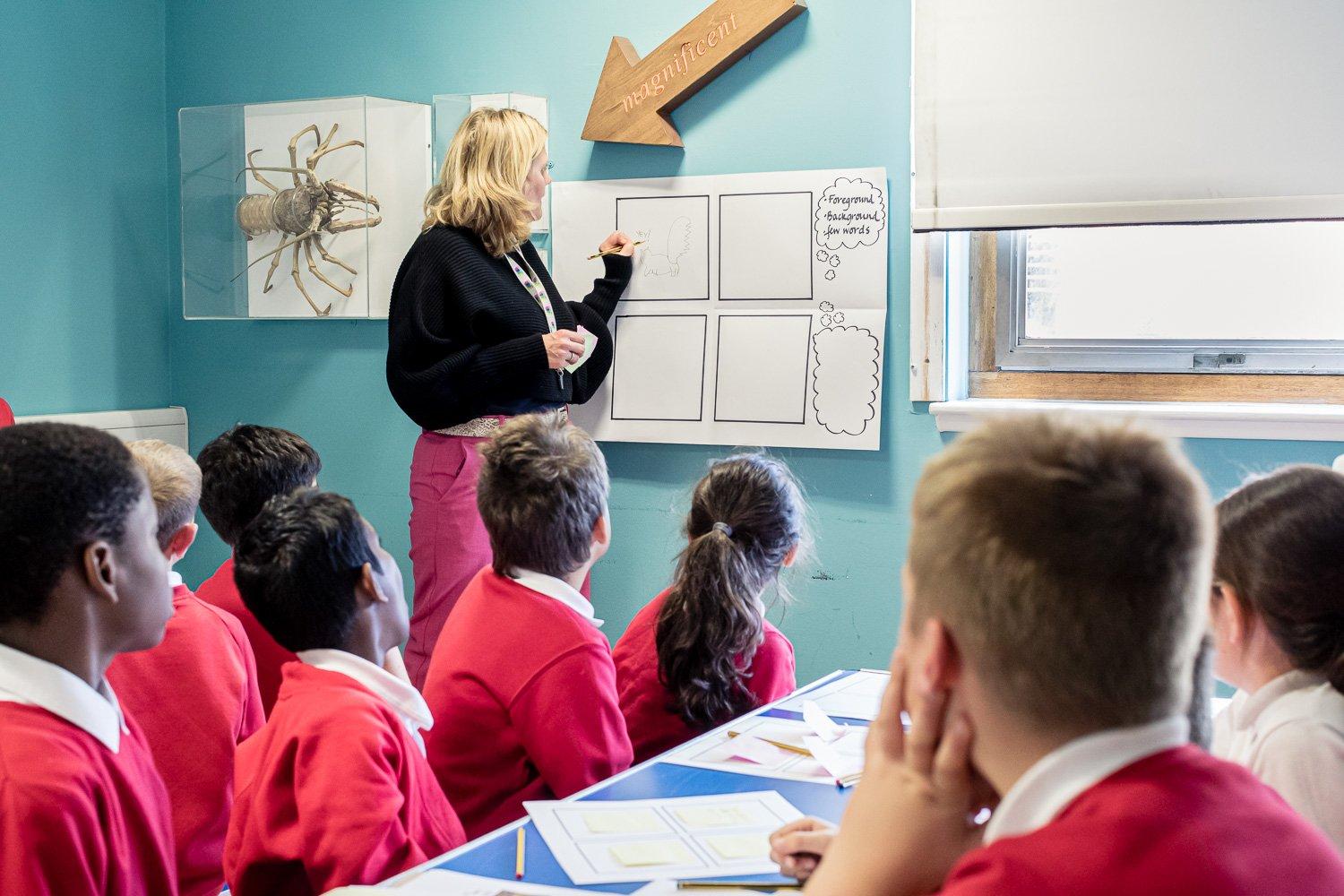Guide for teachers: How museums can support maths and literacy

Wondering how you can use museums to help teach maths and literacy-related topics? We've brought together some useful resources and activities from museums across the UK that can support you in your teaching.
When you think of a museum trip, what curriculum subjects do you immediately think of covering? Often it’s History and Art & Design that spring to mind, but museums can offer purposeful, exciting learning across the curriculum.
In this article we look at some of the ways museums can provide rich learning environments for maths and literacy activities.
Maths in museums: Where to start
Museums can offer students experiences of maths in context. They offer real-world ways for students to use their maths skills to solve problems and understand the world around them.
A museum visit could start with highlighting how students can use maths to plan, by calculating a budget, or by using statistics and data to decide what to see.
A visit can also highlight how maths is used in the museum. For example, geometry, measures, shapes and movement for gallery planning; calculations and percentages for measuring the environmental conditions. In most museums you will see machines in the galleries measuring relative humidity and recording data by creating a graph.
There is maths in the objects as well. You can look at shape symmetry and pattern in art.
Fundamentally, museums can help show that maths is an essential everyday skill.
See below some of the exciting ways museums bring maths to life, through events like planning a medieval banquet, to activities themed around Second World War spy craft, dinosaurs and fossils.
Maths in museums: Resources, activities and events
National Galleries Scotland, Edinburgh
The Beauty of Maths (age 3-12)
This resource aims to inspire learning about maths, through art. It includes a PowerPoint ready for you to use in school, or print out to use on a gallery visit to Modern One.
Bletchley Park, Milton Keynes
Bletchley Park offers school visits, outreach visits and virtual workshops where students (age 5-18) can take part in enjoyable and memorable maths activities as part of Second World War workshops. Activities range from using mathematical reasoning to understand password security to calculating food rations.
Great North Museum: Hancock, Newcastle upon Tyne
Maths in the Museum (age 5 to 11)
The Great North Museum: Hancock has produced five printable self-led activities to do in the museum themed to dinosaurs, fossils, shapes and more.
Amgueddfa Cymru/National Museum Wales
Maths in Museums (age 10 to 11)
This resource is based on Amgueddfa Cymru/National Museum Wales’ art, science and history collections and supports the numeracy framework in primary schools. There are 22 bilingual activities in the toolkit, primarily developed for year 6 pupils, covering geometry, number, data and measures.
Norwich Castle
Marvellous Medieval Maths (age 7 to 11)
In this activity, important noble guests are visiting the castle for a feast and the staff are hurrying to get ready. Students can help the household to solve mathematical problems as part of their preparations and use maths skills in a variety of historical situations. The activity puts maths skills – including measures, geometry, statistics and numbers – to the test, and includes sorting, handling and discussing real museum objects.

Literacy and English in museums: Top tips
Museums can provide rich stimulus and inspiration for creative writing, learning, and using new vocabulary. Trips also offer opportunities for vocabulary development and purposeful writing – such as visit reports, reviews, and thank you letters.
A visit to a museum provides new content students can write about, from objects they’ve seen to their adventures in the museum. Many teachers find that, after a trip to a museum, students write more, with a greater range of vocabulary.
There are resources for teachers that can be used in any museum. For example, the Talking Pictures resource – created by Bristol Museum & Art Gallery, working with Engage and MaxLiteracy – offers a step-by-step guide to creating poems, together with curriculum links, for teachers visiting any art gallery.
Museums also offer specific workshops and visits to develop creative writing skills. Read on for some examples from across the UK.
Literacy-themed workshops and inspiration
Falmouth Art Gallery
What’s the Story? (age 5 to 16)
This workshop explores the stories behind paintings and guides students to create their own characters and plots through discussion and drama.
National Museums Liverpool (Walker Art Gallery)
Storytelling with the Greeks (age 7 to 11)
Built around student interaction, this workshop discusses characters’ emotional responses, infers aspects of the story, and gives students an opportunity to present their ideas to the class. It links well with a topic on Ancient Greece or literacy topics on storytelling, myths and legends.
Reading Museum and Abbey
Creative writing resource (age 7 to 11)
As part of the Reading Abbey Revealed Project, writer and storyteller Cath Edwards has taken inspiration from the museum's collection and local Reading history to produce a creative writing resource that includes lesson plans, activities and ideas aimed at Key Stage 2. The resource includes activities that can be used in any museum as well as specific activities for Reading Museum and Abbey.
For Secondary GCSE
National Civil War Centre, Newark
The National Civil War Centre has created resources to improve GCSE English students’ creative writing skills through exploration of a historic art collection. Resources and lesson plans for ages 14 to 16 are available to download, and the Centre can facilitate literacy-themed visits to the museum. Get in touch with them to discuss a Key Stage 4 visit.
The Whitworth, Manchester
Stories from the Inside Out (age 14 to 16)
The Whitworth has designed this resource for teachers to use as stimulus for developing imaginative writing skills, inspired by images of artworks from the Whitworth’s Musgrave Kinley Outsider Art Collection. The aim of the project is to improve young people’s confidence and imagination in GCSE creative writing, and to support their emotional and mental health literacy skills. Find out more about a visit to the Whitworth.